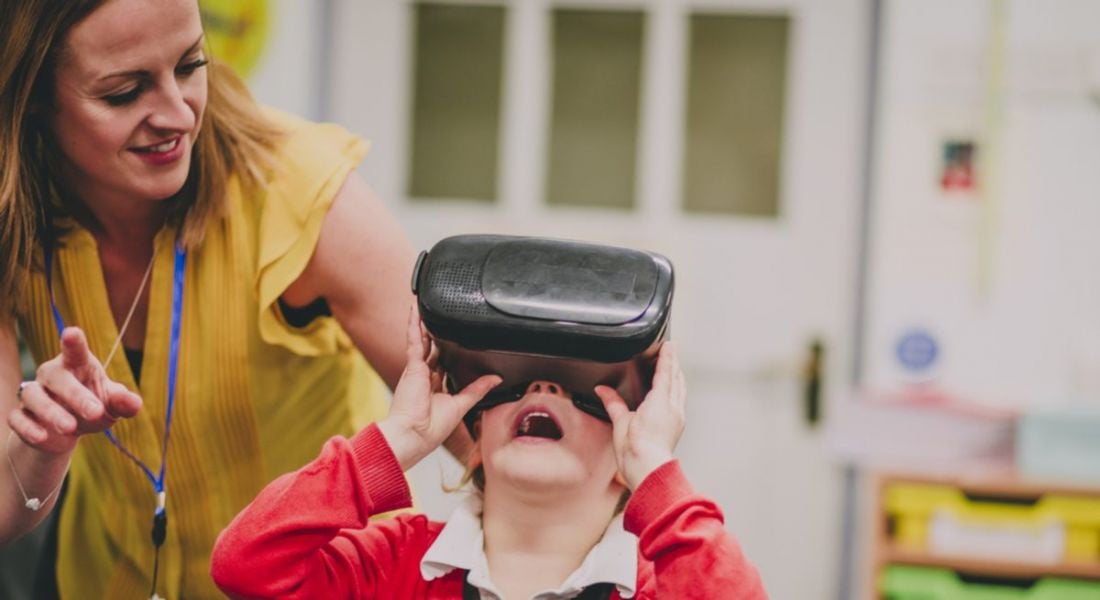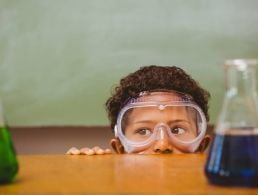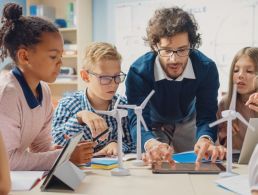While the future of work is already happening, what about the future of education? And how will mixed reality come into play? Andrew B Raupp shares his insights.
As we round out the decade, the scope of what technology can make possible in our scientific explorations seems almost limitless. As new innovations arise, technologies will scale, and access to these tools increases.
With easier access to ever-more powerful consumer electronics, is it possible that everyday students and teachers in STEM classrooms across the globe will soon be able to leverage even more powerful tools in their pursuit of deep core concepts, experimentation and discovery?
STEM has been used for nearly two decades to refer to the subjects of science, technology, engineering and mathematics. Incorporating it in primary schools not only helps make students better prepared for higher education, it also creates a stronger rising workforce of future problem-solvers and critical thinkers.
But STEM is not only an acronym; it’s also a way of looking at the world. Examples abound of STEM’s increasing reach, as well as its potential to change our students, our school and our future capacity for innovation across industries. And, increasingly, there have been some incredibly exciting innovations in the field of mixed reality.
The term mixed reality encompasses both augmented reality (AR) and virtual reality (VR) – technologies that may fundamentally change the way that educators can approach STEM in classrooms all across the globe.
The power of mixed reality
A recent piece in EdTech magazine listed access to STEM through VR as one of the top three trends expected to shape education in 2017. The reason? VR can encourage motivation, build collaboration and offer educators an expanded tool belt of ‘real world’ learning opportunities – all without students and teachers having to leave their classroom.
As opposed to AR, which only overlays some digital objects in the 3D world – think Pokémon Go or Google Glasses, for example – VR creates a totally immersive world. This is currently achieved through special systems or headsets designed specifically to immerse users into an alternate or ‘virtual’ world that they can explore as if they were in the real world.
And EdSurge reports that companies who create educational applications of their tech products are eager to collaborate with educators – and not just to turn a profit. Utilising well-designed STEM programmes and products can help to improve student outcomes, and create a more educated class of citizens who remain connected and skilled in STEM content areas.
So, what do some of the possibilities look like for mixed reality in both STEM fields and classrooms? A recent piece in Digital Bodies reports that these technologies can reach as far as our solar system.
It said: “Using OnSight – a NASA and Microsoft-developed software tool – researchers no longer study images of Mars. They can use holographic teleportation to examine the planet’s surface from a first-person perspective. The 3D terrain is rendered through images received from the Curiosity rover as well as orbiting satellites.”
Utilising this kind of technology can help bring the natural world right into the classroom, and universities are taking note.
At Stanford University, the Virtual Human Interaction Lab has already begun to exponentially widen learning possibilities for students and researchers. The lab offers students the chance to explore totally immersive VR environments to learn about the factors shaping our modern lives – like the acidification of the ocean – through a virtually hands-on lens.
Students are not only able to ‘see’ the concepts they’re learning about in action, but also interact with the virtual environment to actively participate in the scientific method, all by just slipping on a headset.
And, at Texas A&M University, not only are undergraduates and graduate students getting to access their Immersive Mechanics Visualization Lab, but professors are also partnering remotely with high-school students to help them use immersive 3D technologies to participate in the global F1 in Schools competition, which tasks students to use robotics technology to build the car of the future.
Students at the lab can get feedback on their 3D designs from actual aerodynamics experts who, using this immersive technology, can ‘walk around’ the car designs and provide concrete feedback on ways students can improve their designs.
It’s a powerful way to connect students with experts outside of their community, using a technology elegant, inspiring and effective enough to give them an edge on the competition.
These examples illustrate the power of mixed reality to bridge conceptual learning with real-world learning. And it’s not just the education world that’s getting in on the movement. The industry of video game development has begun a kind of renaissance – artistic and economic – with the inclusion of VR offerings.
As more capital streams into this industry, it’s more important than ever before for schools of all kinds to remain on the ground floor of innovation so that young people from all walks of life can access the learning potential that VR can offer.
Next steps in a digital world
There has never been a more urgent time for out-of-the-box solutions for the challenges of our modern world. In schools across the globe, children are facing difficulties, and so are the adults running the systems that are supposed to serve them.
One potential upside? Our current crisis in education is also an opportunity for disruption, innovation and a fresh start. And mixed reality may be one option for doing just that.
While VR is the more dramatic of the two, less-immersive AR can be an excellent way to reach students where they are, by capitalising on the increased use of screen time that has become a reality for modern students.
AR can also level the playing field of student equity by eliminating the need for expensive materials, including specialised gear. This may sound counterintuitive, but innovations in AR have led to increased democratisation of technology access – for example, using cardboard viewers as a low-cost alternative to costly digital viewers.
As more educators and innovators come together to collaborate, we can find creative, low-cost methods of scaling these technologies for the everyday teacher, together. And examples of this work already happening are all around us.
In January 2018, the annual Educause Learning Initiative meeting brought together institutions and organisations to work under the theme of ‘Achieving Student Success Through New Models of Learning’.
In that same month, innovators from a range of industries came out for the Consumer Technology Association (CES) Expo, which offered a dizzying range of workshops for marketers and other stakeholders devoted to figuring out the best way to leverage mixed reality in industries from advertising to education.
The future of STEM education can be built on the shoulders of the mixed reality revolution. Simply put, when traditionalism fails, innovation flourishes. And, through true educational innovation, we may finally find meaningful solutions to the systemic problems that have outpaced our capacity for too long.
Andew B Raupp is the founder of STEM.org, the longest continually operating, privately held STEM organisation in America, serving schools, districts, organisations and the world’s top brands in more than 25 countries.




